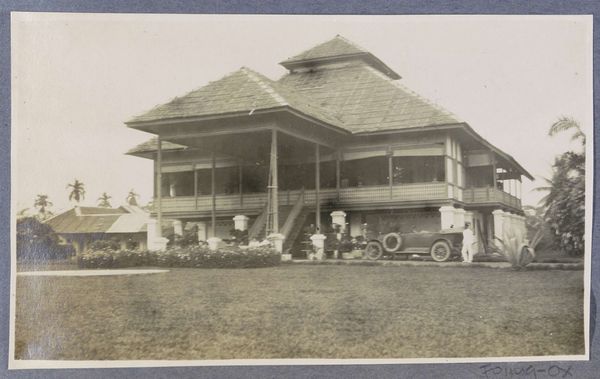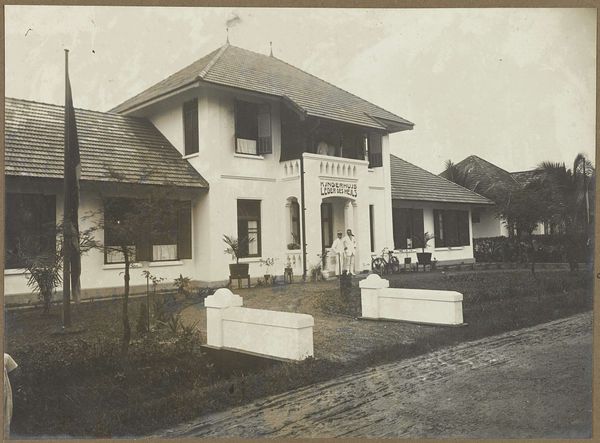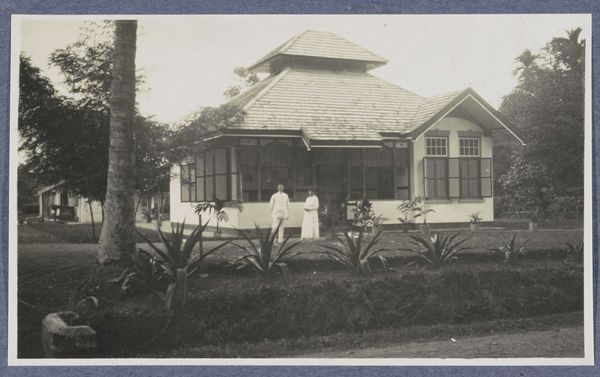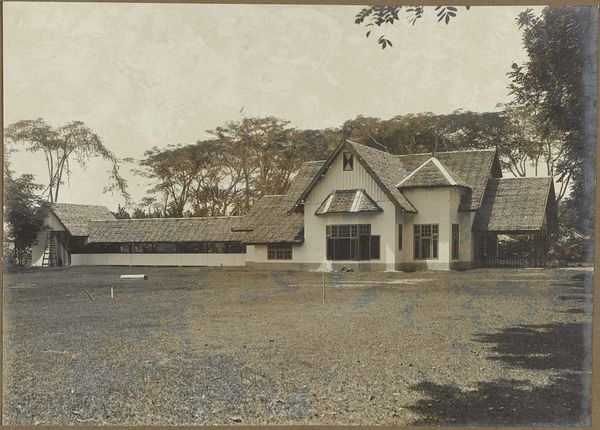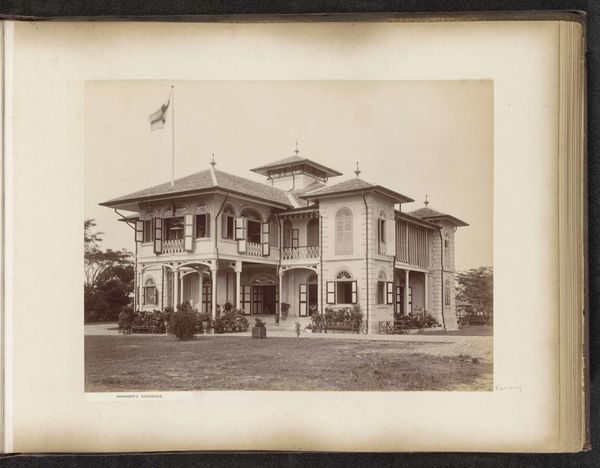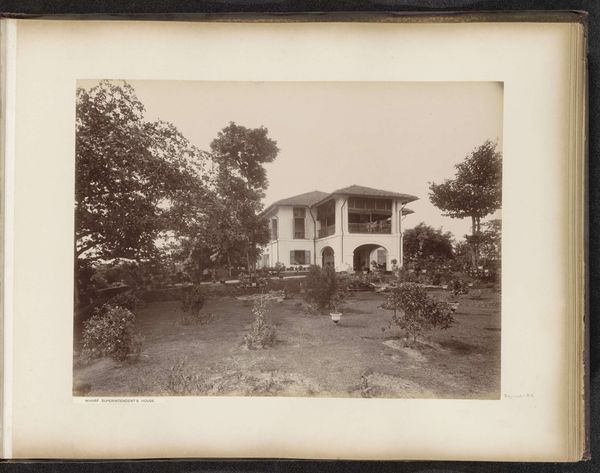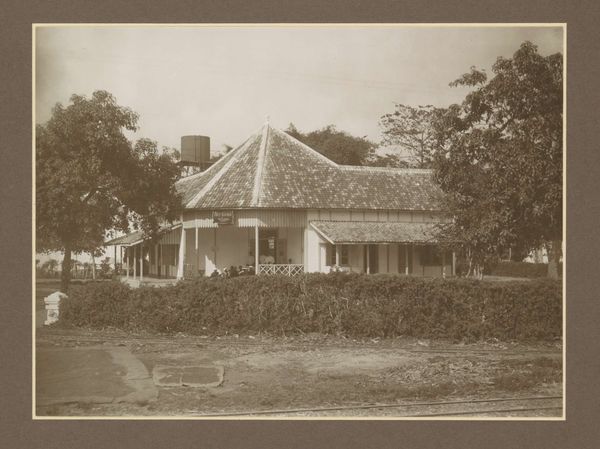
Pagina 40 van fotoboek van de Algemeene Vereeniging van Rubberplanters ter Oostkust van Sumatra (A.V.R.O.S.) c. 1924 - 1925
0:00
0:00
jwmeyster
Rijksmuseum
photography, albumen-print
#
photography
#
orientalism
#
cityscape
#
albumen-print
Dimensions: height 240 mm, width 310 mm
Copyright: Rijks Museum: Open Domain
This photograph by J.W. Meyster, part of a photo book for the A.V.R.O.S. in Sumatra, presents an administrative residence, probably taken around the 1920s. What strikes me is how the tones seem almost hand-painted. The sepia wash gives everything a patina that makes it hard to believe it’s not a watercolour. Look at the texture of the roof, each tile subtly rendered with a gentle gradient, like a soft wash of colour across paper. Then there’s the way the light hits the building, the shadows under the eaves just right. It feels like Meyster carefully considered light and shadow as a painter would, coaxing form and depth from a limited palette. The ordered symmetry of the building mirrors a colonial desire to bring European order to the landscape. But that soft, almost mournful tone hints at something else, a certain ambiguity about the project. It reminds me of some of those slightly unsettling colonial landscapes by Charles-Edouard Boutibonne, a weird mix of the exotic and the everyday. What is the relationship between coloniser and colonised? A question of tones as much as of history.
Comments
No comments
Be the first to comment and join the conversation on the ultimate creative platform.


